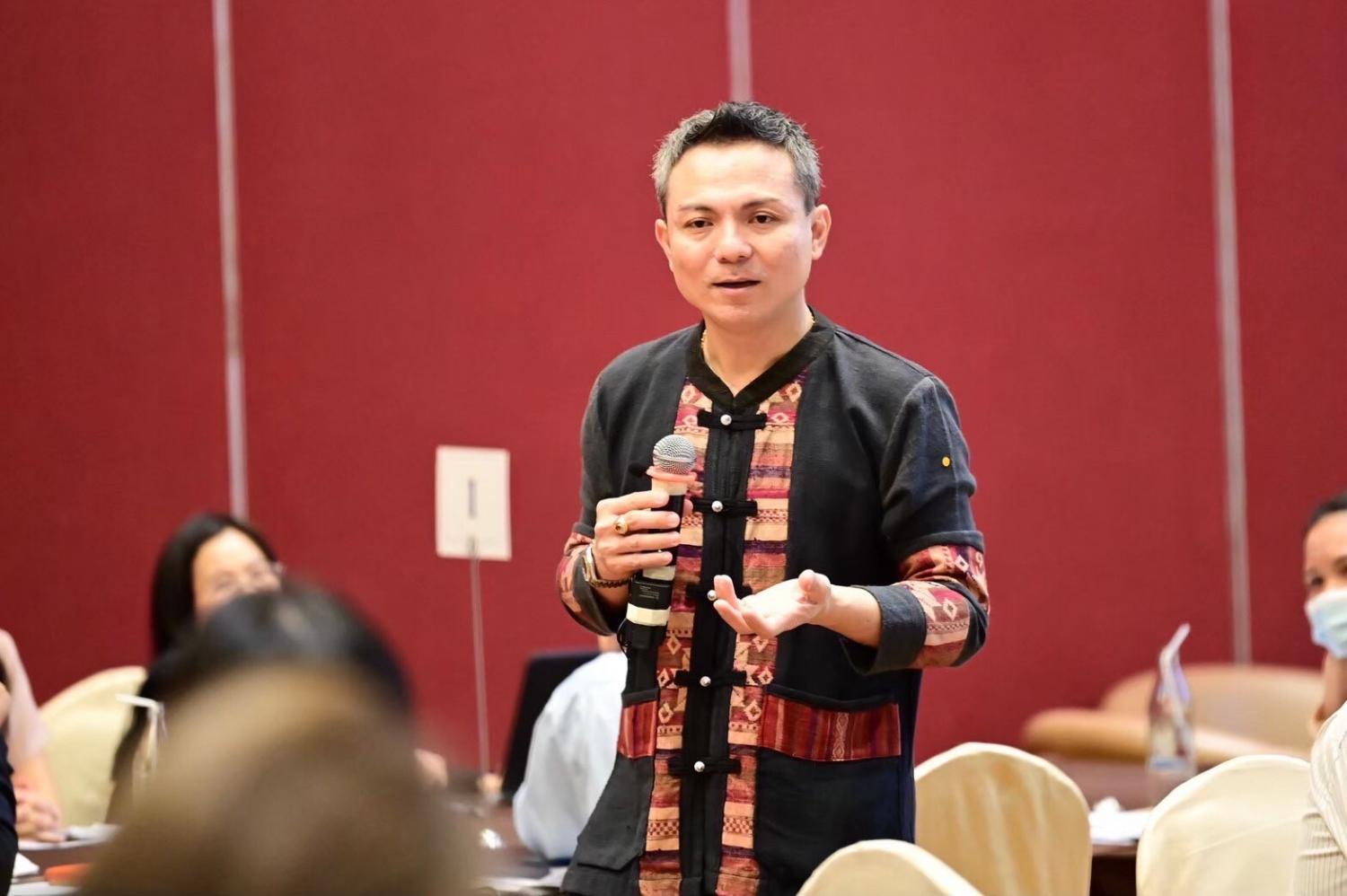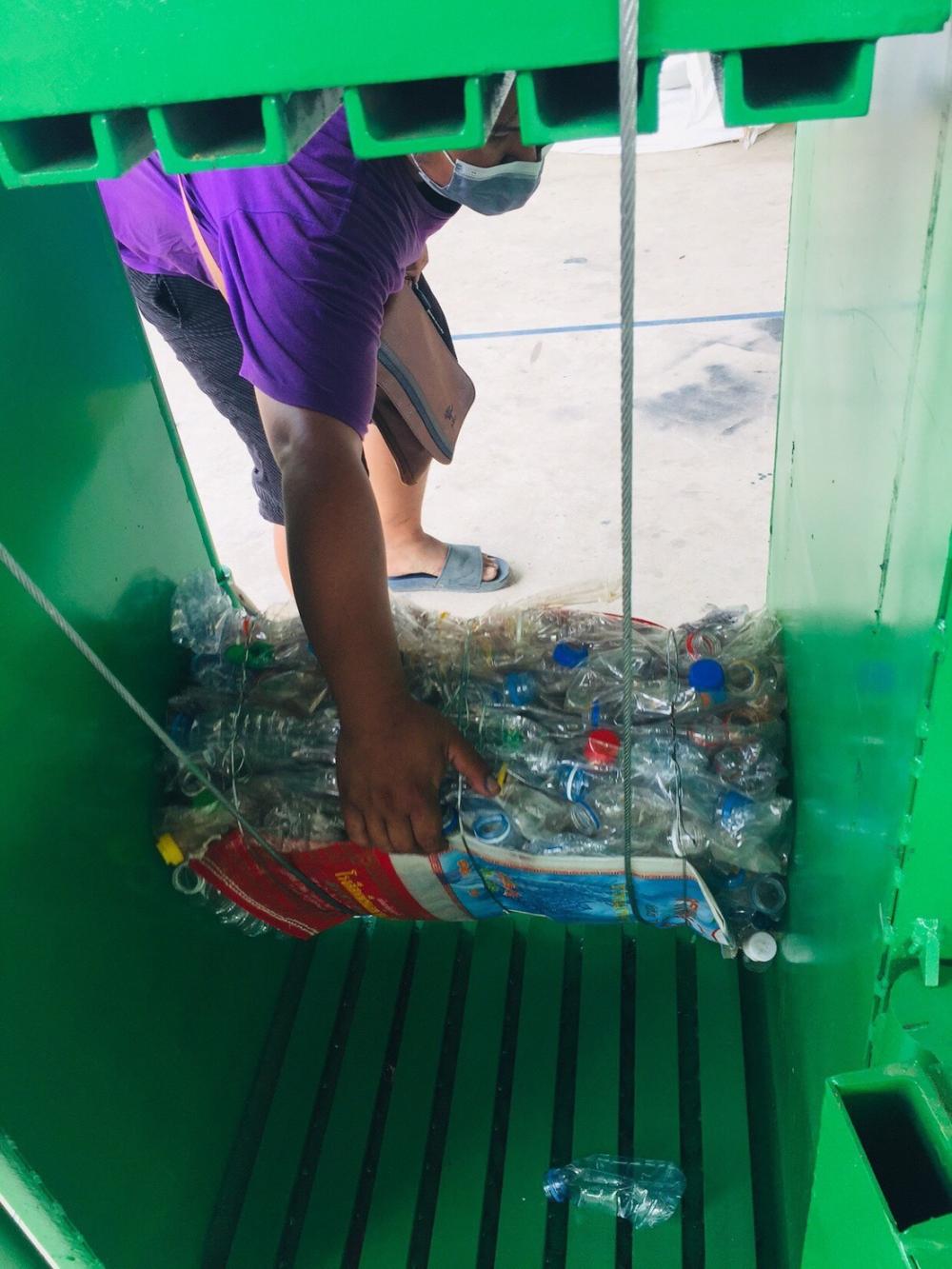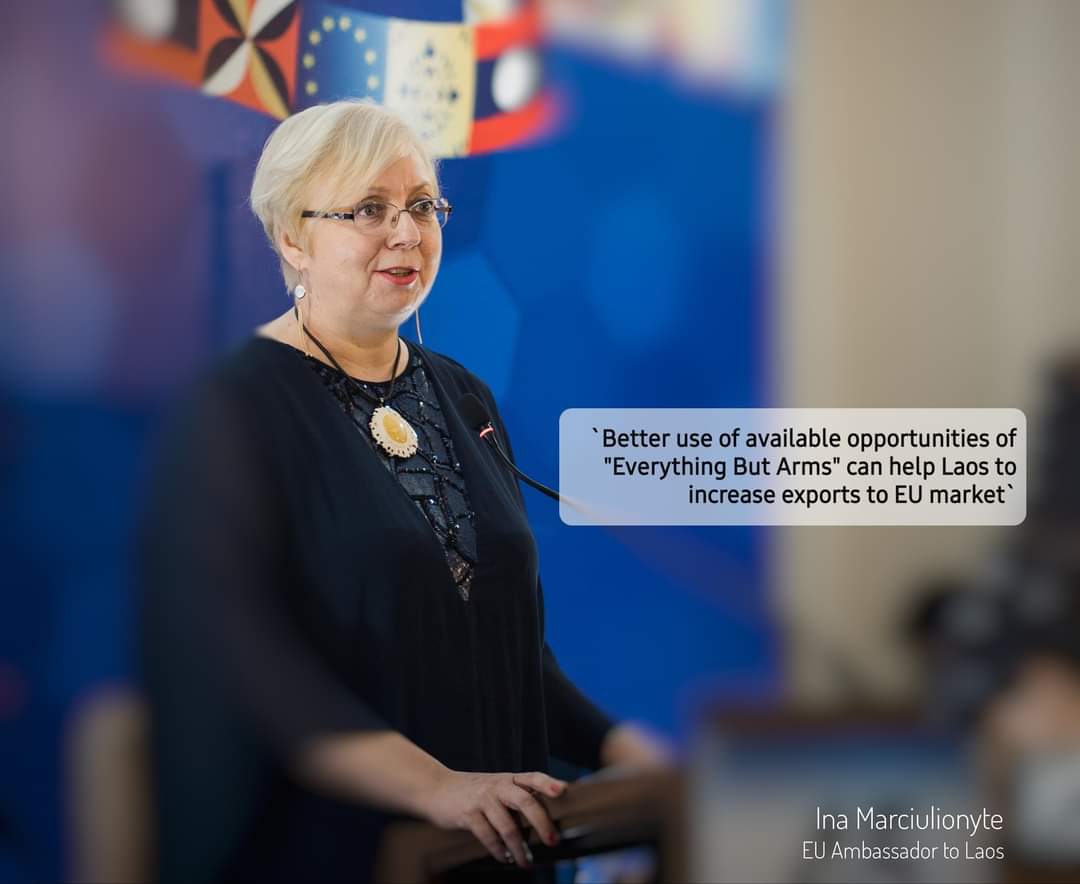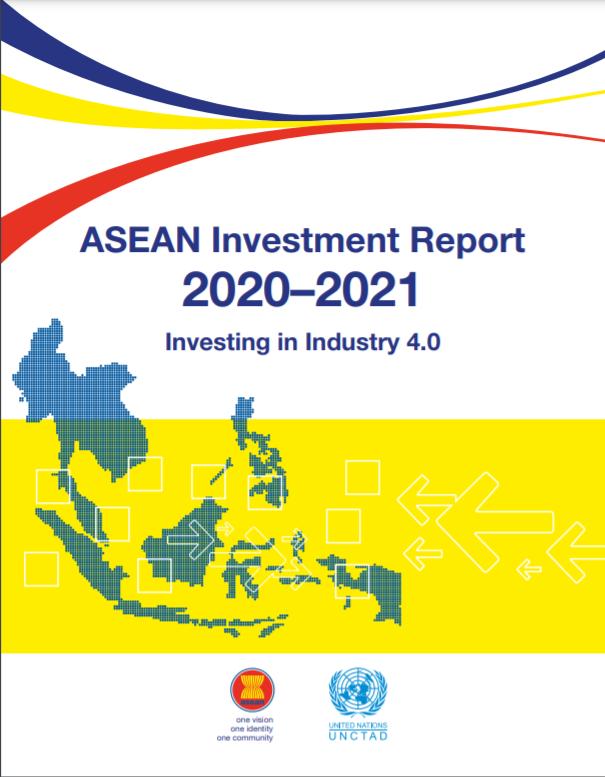165 participants take part in virtual “EBA Engagement Workshop”
How to export to the EU market using trade preferences? This question stood at the centre of the 2-day workshop hosted by the GSP Hub project in cooperation with the EU Delegation to Lao PDR on 16 and 17 September 2021.
The virtual “EBA Engagement Workshop” introduced participants to the “Everything But Arms” (EBA) which grants Least Developed Countries duty-free and quota-free access to the European market and thereby supports export growth and income generation in the beneficiary countries.
The meeting was chaired by H.E. Ms Ina Marčiulionytė, EU Ambassador to Lao PDR, and H.E. Mr Khampheng Xaysompheng, Minister of Industry and Commerce. “It is important to better understand the available opportunities and remaining challenges for target markets of the EBA”, H.E. Ms Ina Marčiulionytė stated acknowledging the objectives of the workshop. H.E. Mr Khampheng Xaysompheng further highlighted that "the EBA has contributed significantly to the growth of the Lao economy, and has enabled us to access the EU market and pursue modern development."
Together with 15 speakers from the European Union and Lao PDR, participants discussed the relevance of the “Everything but Arms” for exports to the European Union but also as an incentive for European investments in the country. The discussion also covered additional trade opportunities with a special focus on sustainable agricultural products. Speakers emphasised that new trade strategies become particularly important in view of Lao PDR’s upcoming graduation from the LDC category, which will go along with a graduation from the EBA scheme after a three-year transition period. Speakers from the European Commission’s DG Trade and the ILO introduced participants to the GSP+, an arrangement that would allow Lao exporters to maintain preferential market access. The benefits of the GSP+ are, however, bound to the ratification and effective implementation of 27 international conventions on human and labour rights, environmental protection, and good governance.
The two-day workshop was attended by in total 165 participants from different ministries and public authorities, the private sector, civil society, and academia.
More information about the GSP Hub and the Everything But Arms/ Generalised Scheme of Preferences can be found here: www.gsphub.eu
SOUTH Korean and Taiwanese chipmakers look set to ramp up their long-term footprint in Asean, even as American semiconductor companies remain the dominant player for now, says a new analysis of the region's investor attractiveness.
Still, most major South-east Asian economies fared poorly in a ranking by DBS Group Research, which assessed countries on factors such as labour cost and skill, electricity prices, infrastructure and level of digitalisation.
Singapore is the best-positioned market to clinch foreign direct investment (FDI) for semiconductor manufacturing, and Malaysia has the opportunity to upgrade from assembly and testing to fabrication, DBS economist Ma Tieying wrote on Wednesday.
This is despite Malaysia having to face short-term risks from pandemic-related supply-chain disruptions, which could cause delays in foreign investors' investment expansions.
But Ms Ma described the rest of the region as "underperformers" that rely on low labour costs to attract FDI in relatively manpower-intensive chip assembly and testing.
Further investments require significant progress in the governments' investments in education and infrastructure, and in economic and institutional reforms, she said.
The interest comes as the Asean-6 economies contributed more than one-fifth of the world's electronics exports in 2019 on the back of their rising participation in semiconductor production.
For instance, Thailand recently green-lit tax breaks for investments in wafer fabs, as well as assembly, testing and advanced printed circuit board projects, while Vietnam plans to boost its manufacturing of high-value-added electronics, Ms Ma noted.
Most foreign semiconductor investors in the region, such as Intel and Micron, are American; South Korean and Taiwanese semiconductor firms, such as TSMC, Samsung and SK Hynix, have historically preferred China for their operations.
But, besides an expected short-term ramp-up by United States companies aiming to meet surging chip demand in the region, Ms Ma projected that South Korean and Taiwanese players will raise their stakes in South-east Asia in the coming years.
"Their production facilities are mainly located in their home countries and China at present, which suggests the need for decentralisation in the context of the pandemic and China-US tensions," she said.
"It will not be surprising to see South Korean and Taiwanese semiconductor firms further expand footprints to the Asean region - in the relatively less advanced technology areas - in the years ahead."
Source: The Business Times (Singapore)
Date: 23 September 2021
The Association of South-east Asian Nations (Asean) will collaborate with its external partners to spur stronger recovery from the pandemic and lay a foundation for longer-term growth, Singapore's Trade and Industry Minister Gan Kim Yong said in a LinkedIn post on Wednesday.
"Asean and our dialogue partners exchanged views on ... the economic impact of Covid-19, and discussed cooperation areas to mitigate its impact and hasten recovery," he wrote.
His post came after the week-long Asean Economic Ministers' Consultations with the grouping's key partners, including China and the United States, wrapped up on Wednesday.
The ministers agreed to collaborate on the digital economy, including working on the exchange of electronic customs information.
They also committed to conducting a study on a region-wide digital economy pact by 2023 and to start negotiations on the Asean Digital Economy Framework Agreement by 2025.
A focus on digital transformation to enable the smooth flow of goods and services and data will help ensure the region continues to draw global trade and investments, and better position itself for growth, Mr Gan said at virtual meetings with his counterparts last week.
The grouping also agreed to work with Japan on innovation and sustainability in industries, urban areas and rural areas, and held inaugural consultations on economic cooperation with Britain.
"We also discussed enhancing our existing free-trade agreements with our dialogue partners such as Australia-New Zealand, China and Korea, and working towards the ratifying the Regional Comprehensive Economic Partnership Agreement in early 2022," Mr Gan said.
As Singapore and nearby countries start their journey towards living with Covid-19 as an endemic, Southeast Asia (SEA) businesses can expect to see more changes in the frequency of remote work, new online customers, and shifts in buying behaviors.
To stay agile, businesses will need to carefully consider the future of work, and source the talent, develop the skills, and organise the teams that can bring a digital-first customer experience (CX) strategy to life. With face-to-face interactions increasingly making way for digital engagements, online shopping has shot up, and businesses must pivot to keep up to customer expectations.
When wesurveyed marketing and technology leaders for the 2021 Digital Trends Report, both CX leaders and mainstream companies ranked “lack of digital skills” as the third-highest issue holding back their marketing and CX organisation. Even before the pandemic, SEA businesses were concerned about the digital skills gap, with the explosion of digital channels and technologies.
However, the future of work is not only about technology. In the new digital-first world, customers expect brands to deliver digital-led experiences specifically tailored to their needs and preferences. In addition to the right technologies, brands must invest in the right skills as well, to meet those fast-evolving expectations.
Technical upskilling is only part of the solution. To build a customer experience advantage, business leaders and marketers need to be savvy about data analytics, change management, and storytelling skills too. Focusing on these three areas will help organisations deliver impactful experiences at every stage of the customer journey.
1. Turn data into actionable insights.
Plenty of people have technical skills but there aren’t enough who understand what the data is telling them in their particular business context. What’s lacking is a marriage of traditional analytical skills and technology.
There are many digital skills programs that train people in coding, business intelligence tools, and collaboration tools. However, many businesses don’t realise that it’s probably easier to take someone who already understands your business and teach them about data analytics, rather than hiring somebody who has the technical skills but will need to learn your business from scratch.
Digital upskilling isn’t just about training a new generation of workers. It’s about taking the workforce that businesses already have and equipping them with the latest digital tools to stay relevant.
For instance, the Adobe Programmatic League in Southeast Asia introduces existing members of the workforce to data and analytics, and show them ways to apply those digital skills to their functions. It’s taking decision-makers who aren’t experts in technology — and empowering them by bringing them into the world of data analytics. They then learn how they can transfer those capabilities to their organisation in this new world of CX.
We also partner with government agencies to deliver digital skills induction and enablement programs to the Singapore population. It’s an on-ramp to the world of CX, providing an awareness of how Adobe enterprise customers have used digital solutions to access better insights about their customers.
2. Adopt change management as a mindset
Change management — making change that is successful and sustainable — is a methodology and a learnable skill. Everyone involved in implementing a new technology should understand they are in a change program. Business leaders need to know how to make the change successful. If not approached that way, they won’t get the full value out of their technology investment and will subsequently fail in building a customer-first organisation.
The Singapore Tourism Board (STB), an agency that’s changing its industry through data and analytics. Even before the pandemic, STB realised the tourism industry needed more technology, data, and insights to be more efficient and profitable. The agency wanted to create a centralised data and insights platform to help the country’s travel and tourism ecosystem move into the digital age.
Adobe helped STB build the Singapore Tourism Analytics Network (STAN) and integrate it into the Singapore ecosystem. It’s a great example of an organisation taking the leadership on change and coordinating the industry through that change process, so they see the value and benefit from it.
Another example of an organisation leading with a change management mindset is M1. Despite being a pioneer in the telco industry, the organisation is embracing change by becoming Singapore’s first truly digital communication provider. M1 recently refreshed its brand identity, complemented with new made-to-measure offerings and an enhanced customer experience journey — including an overhauled digital experience roadmap, supported by Adobe.
3. Every customer journey is a storytelling opportunity
It’s critical that marketers have strong storytelling skills, both internally, to get all the teams aligned around the customer journey they’re trying to create, and externally, to deliver the right messages to customers at each stage of their journey with the brand.
Once business leaders have taken the time to understand the customer journey, they should organise their people to align and support in a consistent manner. This approach is a powerful way of showing empathy to customers, while lining up all the necessary data logistics to support the entire customer journey.
That level of empathy is only attainable when all the data is gathered, and segments are identified. That’s what allows you to tell the right story. It’s essential to link all these insights from an external point of view so that businesses can engage customers with the right level of empathy throughout the entire customer journey.
Showing that the customer journey is a story in itself, is powerful. If someone takes the time to document that story and articulate it and ensures that everyone in the organisation understands that customer story, everyone will then realise how they should be supporting that story — what their roles and responsibilities are, and how they can coordinate all of that to make it a smooth journey.
Establishing a successful digital future in Southeast Asia
The SEA region is a fast-growing digital market, and businesses need to upskill their workforce to digital work rapidly. The demographics show that the region has both a growing middle class and many young people needing jobs, so demand is aplenty.
The mechanics of future-proofing a brand are no less important than the conceptual framework it’s built on. Educating and training employees to understand and use technology effectively — and interacting with customers in new and improved ways — isn’t optional.
Upskilling is key to establishing a successful digital future in SEA, and it will require a concerted effort from different stakeholders — from technology companies to higher education institutes, and governments.
Source: The Business Times (Singapore)
Date: 20 September 2021
Reference: https://www.businesstimes.com.sg/asean-business/how-businesses-in-southeast-asia-can-upskill-for-the-future-of-work
SOUTH-EAST Asian investors have gained an increased focus on their financial well-being, more so than their global counterparts, and this behaviour is likely to be a lasting legacy of the Covid-19 pandemic, according to the Schroders Global Investor Study 2021 on Tuesday.
The study found that a vast majority of investors have spent more time considering their financial well-being and reorganising their personal finances since the pandemic began, the asset manager said.
This is particularly so for investors in Thailand, with 91 per cent of them sharing this view strongly. This was followed by investors in Indonesia at 88 per cent, Malaysia at 85 per cent and Singapore at 81 per cent.
More than half the investors in this region are likely to save more once the Covid-19 situation normalises, compared with the global average of 46 per cent.
The study surveyed 24,000 individuals in 33 economies across Asia, Europe and the Americas from March to August this year.
Schroders noted that the survey reflected respondents' relatively more cautious outlook stemming from fluctuating lockdown cycles and slow vaccine rollouts during this period.
Respondents' more measured approach also applied to their retirement outlook, with 65 per cent of retirees in South-east Asia now more conservative with spending their retirement savings, compared with 58 per cent of retirees globally.
Meanwhile, 75 per cent of those yet to retire now want to save more towards their retirement, higher than the global average of 67 per cent.
Over the course of 2020, 26 per cent of investors in South-east Asia said they had saved more than they planned to, while 56 per cent saved as much as they had planned.
Among those who were unable to save as much as planned, 57 per cent in South-east Asia cited reduced income as a key reason.
Despite the challenges posed by the pandemic, investor confidence is at its highest level since Schroders began this study in 2016. They are expecting annual returns to average 11.3 per cent, up from last year's prediction of 10.9 per cent.
Overall, South-east Asian investors are among the most bullish, as they expect annual total returns of 12.8 per cent over the next five years. This is followed by investors in the Americas, broader Asia and Europe.
"Despite the huge challenges we have all encountered, it is encouraging to see that the pandemic has acted as a catalyst for promoting a stronger focus on generic financial planning and wellbeing," said Stuart Podmore, a behavioural investment insights specialist at Schroders, noting that the pandemic has heightened the overall sense of uncertainty.
"At the same time, we need to exert caution over the investment returns we expect over the coming five years, as the outlook shared by many investors - and in particular those who believe themselves to be experts - is exceptionally optimistic," he said.
He added that the future remains difficult to predict, as evidenced by the past 18 months, and a consistent and patient approach to investing, focused on long-term objectives and probable outcomes, is likely to stand investors in better stead.
Source: The Business Times (Singapore)
Date: 14 September 2021
Reference: https://www.businesstimes.com.sg/asean-business/asean-investors-more-focused-on-financial-well-being-following-covid-19-pandemic
Written by Sam Cheong, head of group FDI advisory and network partnerships at UOB.
Global foreign direct investment (FDI) flows have been hit harder by the COVID-19 pandemic than the global financial crisis of 2008 to 2009.
According to the United Nations Conference on Trade and Development’s (UNCTAD) World Investment Report 2021, global FDI flows dropped one-third from US$1.5 trillion in 2019 to US$1 trillion in 2020. In fact, 2020's FDI flows were 20 per cent lower than those in 2009, as lockdowns and the prospect of a recession led to many companies around the world reassessing their investment plans.
FDI inflows across Asia remain resilient
Despite the economic impact of the COVID-19 pandemic, Asia stood out as an attractive destination for FDI.
The UNCTAD report showed that FDI flows to Asia in 2020 rose by four per cent to US$535 billion – driven by investment flows into China, which reached US$149 billion, compared with US$141 billion in 2019.
FDI growth in Asia is expected to continue, with a five to 10 per cent year-on-year increase in 2021. According to the UNCTAD report, this momentum is driven by "growing markets, extensive regional and global linkages, and an investment climate that has remained generally open despite the pandemic".
Looking closer to home, Asean’s FDI inflows were muted in 2020. Each of the region’s top FDI recipients reported declines – Singapore by 21 per cent, Indonesia by 22 per cent and Vietnam by two per cent. These three countries accounted for more than 90 per cent of FDI inflows in 2020.
Thailand saw FDI inflows from foreign investors amounting to US$3 billion in 2019, turning into a negative inflow of US$6 billion in 2020 driven by divestments. In comparison, other ASEAN countries saw FDI inflows fall. In Malaysia, FDI fell 55 per cent to US$3 billion, while in Myanmar, FDI fell 34 per cent to US$1.8 billion.
However, the outlook for ASEAN remains bright. The signing of the Regional Comprehensive Economic Partnership (RCEP), which involves all ASEAN member countries, China, Japan, South Korea, Australia and New Zealand, is expected to be one of the major growth drivers as the trade bloc becomes more economically integrated.
Growth in energy infrastructure projects
In 2020, energy infrastructure projects globally fell 40 per cent to US$27 billion – the lowest point in eight years. For Asia the experience was the opposite. Asia was the only region to grow in the number and value of energy infrastructure projects.
For example, in Vietnam, the United States’ ExxonMobil has proposed a US$5 billion gas-fired power plant while Delta Offshore Energy (Singapore) will also be setting up a US$4 billion LNG power generation facility.
Defying the global slowdown in spending, FDI in renewable energy projects also increased, from US$30.7 billion in 2019 to US$33.4 billion in 2020. Asean's FDI in renewable energy sources is also set to grow further as the region commits to reviewing and transitioning its energy mix. B.Grimm, a Thai private power producer, is building a solar power plant in Vietnam that is set to be one of the largest in the region. Impact Electrons Siam is also developing a 600MW wind farm in Laos, which will be the biggest wind project in Asean.
Intra-regional investments by Southeast Asian companies
Much of the Asean’s FDI investment stayed within the region, due to its attractive long-term growth potential. Intra-ASEAN FDI flows saw 5.4 per cent growth in 2020, from US$22.1 in 2019 to US$23.3 billion in 2020.
Singapore and Thailand were the two largest investors in ASEAN in 2020. In fact, companies from Singapore formed the largest investor group in some countries – 25 per cent of FDI in Indonesia and 40 per cent of FDI in Vietnam was from Singapore. According to Enterprise Singapore, companies from the island-state have invested in Indonesia's consumer products and services, manufacturing, transportation, logistics and infrastructure sectors.
Thailand's FDI outflows more than doubled to US$17 billion in 2020. Almost 85 per cent of the outflows were funnelled into industries such as financial services, retail and wholesale, manufacturing, real estate, and construction activities within Asean.
Indonesia and the Philippines also invested into the region, with outward investment from the two countries rising to US$4.5 billion and US$3.5 billion respectively. For example, Japfa Comfeed (Indonesia) opened a feed mill in Vietnam while Ayala Corporation (Philippines), together with a Singaporean partner, is also constructing a wind farm in the country.
While the overall outlook for ASEAN depends on how countries are able to contain the pandemic and new virus strains, intra-regional investment will boost not only stronger economic cooperation but also long-term growth prospects for the economic bloc.
Source: The Business Times (Singapore)
Date: 15 September 2021
Reference: https://www.businesstimes.com.sg/asean-business/fdi-inflows-across-asia-remain-resilient-despite-the-prolonged-pandemic
Bandar Seri Begawan, 8 September 2021 – Today, the “ASEAN Investment Report 2020-2021: Investing in Industry 4.0” was launched during the Virtual Meeting of the ASEAN Economic Ministers – 24th ASEAN Investment Area Council (AEM – 24th AIAC) Meeting.
Foreign direct investment (FDI) flows into ASEAN fell by 25% to US$137 billion from an all-time high of US$ 182 billion in 2019 given the impact of the COVID-19 pandemic. Despite the decline, ASEAN remained an attractive investment destination, with its share of global FDI rising from 11.9% in 2019 to 13.7% in 2020.
In November 2020, ASEAN and its five Free Trade Agreement (FTA) partners signed the Regional Comprehensive Economic Partnership (RCEP) Agreement, which is expected to further boost FDI and enhance economic integration in the economic bloc that constitutes about 15% of global FDI stock and more than 33% of global FDI flows in 2020.
This year’s report features FDI’s role in the region’s Industry 4.0 transformation and how Member States are adopting Industry 4.0 technologies to step up industrialisation and economic development. It also provides policy options to attract FDI in supporting the digital transformation of ASEAN, including in setting the right strategic direction and addressing the bottlenecks that impede the transformation.
The ASEAN Investment Report is prepared under a technical cooperation agreement between the ASEAN Secretariat and the United Nations Conference on Trade and Development (UNCTAD), with inputs from members of the ASEAN Coordinating Committee on Investment (CCI) and supported by the ASEAN-Australia Development Cooperation Program Phase II (AADCP II).
The report can be downloaded at:
- https://asean.org/wp-content/uploads/2021/09/AIR-2020-2021.pdf
- http://investasean.asean.org/files/upload/ASEAN Investment Report 2020-2021.pdf
- https://unctad.org/webflyer/asean-investment-report-2021
























